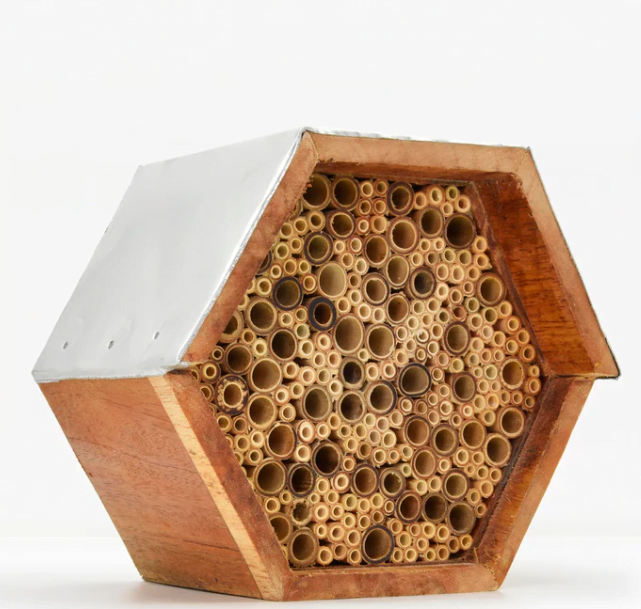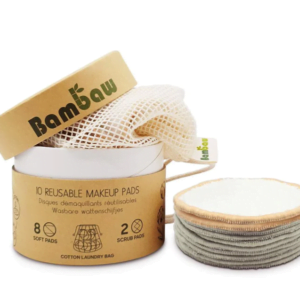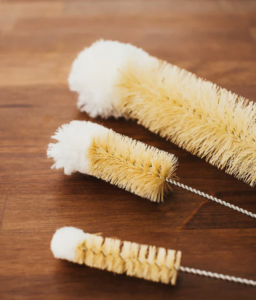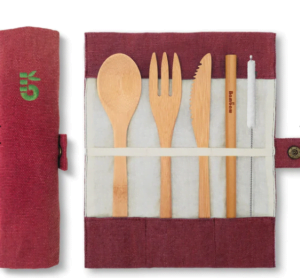- Before we begin, let’s take a moment to comprehend the nature of solitary bees.
- What is the role of solitary bee house?
- Is it even safe to have a bee house?
- What is the importance of bees?
- What happens if bees go extinct?
- How to use this solitary bee house?
- Designed for humans and not bees !
- What is this bee house made of?
- When is the ideal time to install and safe place to keep this bee house?
Before we begin, let’s take a moment to comprehend the nature of solitary bees.
Solitary bees, a diverse group within the bee family, are remarkable pollinators that lead independent lives, distinct from the well-known social honeybees. Unlike their hive-dwelling relatives, solitary bees do not form colonies or complex societies. Instead, each female solitary bee operates autonomously, constructing her own nest and provisioning it for her offspring.

Solitary bees play a pivotal role in pollination, facilitating the reproduction of various plants, including crops and wildflowers. They exhibit a wide range of sizes, colours, and behaviours, adapting to various ecological niches. These bees are typically docile and non-aggressive, focusing their energy on foraging and pollination rather than defence.
The nesting habits of solitary bees vary. Some species nest in pre existing holes, such as beetle burrows or hollow plant stems, while others excavate their own nests in soft soil or decaying wood. Each nest contains separate chambers, where the female lays an egg along with a supply of pollen and nectar. Once sealed, the eggs develop into larvae that feed on the stored provisions, eventually emerging as fully developed bees.
What is the role of solitary bee house?
A solitary bee house, also known as a solitary bee hotel or bee nesting box, is a specially designed structure created to provide a safe and conducive habitat for solitary bees. Unlike their more well-known social counterparts like honeybees, solitary bees do not live in hives or colonies. Instead, they lead independent lives, each female bee constructing her own nest to lay eggs and provide food for her offspring. Solitary bees play a crucial role in pollination, contributing significantly to the health and diversity of ecosystems.

A solitary bee house typically consists of a wooden or bamboo frame with hollow tubes or cavities that mimic natural nesting sites, such as abandoned beetle holes or plant stems. These hollow tubes serve as individual nesting chambers for female solitary bees. The bees lay their eggs inside these chambers, along with a supply of pollen and nectar as food for the developing larvae. Once sealed, the eggs hatch into larvae that feed on the provisions until they pupate and emerge as adult bees.
The buying of a solitary bee house is a thoughtful endeavour aimed at supporting these industrious pollinators. By providing a suitable habitat, we not only assist in the reproduction of solitary bees but also contribute to the enhancement of pollination in our surroundings. This, in turn, leads to improved plant biodiversity and increased yield in gardens and agricultural fields. Solitary bee houses are valuable tools in conservation efforts, especially considering the decline in natural nesting sites due to habitat destruction and urbanization.
In a world where biodiversity and ecosystem health are of paramount importance, the simple act of installing a solitary bee house can have far-reaching positive impacts. As we acknowledge the intricate connections between all living beings, embracing the concept of a solitary bee house is a step towards nurturing and preserving these humble yet vital contributors to the natural world.
Is it even safe to have a bee house?
You might be thinking we are crazy for asking you to buy this solitary bee house for your garden. But, do not worry. We have answers for your questions.
Having a solitary bee house in your garden is generally safe and can be beneficial for both the bees and your garden ecosystem. Solitary bee houses are designed to provide a nesting habitat for solitary bees, which are typically docile and non-aggressive. Unlike social bees like honeybees, solitary bees do not defend a hive or store large quantities of honey, which makes them less likely to sting unless directly provoked.
Here are some key points to consider regarding the safety of having a solitary bee house:
1 Non-Aggressive Behavior: Solitary bees are solitary by nature and do not defend a hive or store large quantities of honey like social bees (e.g., honeybees or bumblebees). They are focused on foraging and pollination, making them less likely to sting humans.
2 Sting Risk: While solitary bees have the ability to sting, their stings are typically milder than those of some other bee species. The vast majority of solitary bees do not sting unless they perceive a direct threat.
3 Minimal Interaction: Solitary bees are not interested in interacting with humans. They are primarily concerned with their nesting and foraging activities.
4 Educational Opportunity: A solitary bee house can provide a unique educational opportunity for observing and learning about the behaviour and lifecycle of solitary bees, promoting understanding and respect for these beneficial insects.
5 Low Maintenance: Solitary bee houses require minimal maintenance once set up. You can enjoy the presence of these pollinators without needing to intervene frequently.
6 Protective Measures: If you or anyone in your household is allergic to bee stings, it’s important to take appropriate precautions. Placing the solitary bee house in a location where you don’t frequently walk by or sit nearby can help minimize the chances of accidental interactions.
To ensure a safe and successful experience with a solitary bee house:
1 Choose an Appropriate Location: Place the bee house in an area with good sunlight and protection from strong winds. Consider placing it near flowering plants to attract solitary bees for pollination.
2 Secure Mounting: Make sure the bee house is securely mounted to prevent it from falling or being knocked over.
3 Observe from a Distance: While it’s interesting to observe the bees, avoid getting too close to the bee house or disturbing the nesting chambers.
Overall, a solitary bee house is a safe and beneficial addition to your garden, promoting pollination and contributing to the conservation of these important pollinators. By providing a suitable habitat for solitary bees, you are helping to support biodiversity and ecosystem health.
What is the importance of bees?
Bees are vital pollinators with immense importance in the world’s ecosystems. Their role in pollination is fundamental to the reproduction of flowering plants, including numerous crops that form the foundation of human diets. Around 75% of global food crops benefit from bee pollination, enhancing crop yields and ensuring food security. Beyond agriculture, bees foster biodiversity by facilitating the growth of diverse plant species, thus supporting the health of ecosystems. Their activities also contribute to wildlife habitats, seed production, and the resilience of plant populations. Economically, bees generate billions of dollars in value through pollination services. Moreover, their cultural symbolism, aesthetic contributions, and role in scientific research highlight their significance.
Bees, both solitary and social species like honeybees and bumblebees, play a crucial and irreplaceable role in the world’s ecosystems and human societies. Their importance extends far beyond their role as producers of honey. Here are some key reasons why bees are essential:
1 Pollination: Bees are one of the most effective pollinators, transferring pollen from one flower to another as they forage for nectar and pollen. This process is essential for the reproduction of many flowering plants, including food crops, fruits, vegetables, and wildflowers. About 75% of global food crops rely to some extent on pollination, contributing to human nutrition and food security.
2 Biodiversity: Bees contribute to plant biodiversity by pollinating a wide range of plant species. This, in turn, supports diverse ecosystems and habitats. Bees help maintain the balance of various plant populations, ensuring the health of entire ecosystems.
3 Economic Value: The global economic value of bee pollination services is estimated to be in the billions of dollars annually.
What happens if bees go extinct?
You should have come across Albert Einstein’s quote by now which says, “If the bee disappeared off the surface of the globe, then man would have only four years of life left. No more bees, no more pollination, no more plants, no more animals, no more man.”
Here are some of the consequences we would be facing if bees become extinct:
1 Food Supply Disruption: Bees are crucial pollinators for many fruits, vegetables, and crops that make up a significant portion of human diets. Without bees, the pollination process that leads to fruit and seed production would be severely compromised, leading to reduced yields and potentially causing food shortages. Staple crops like apples, strawberries, almonds, and coffee, among others, heavily depend on bee pollination.
2 Economic Impact: Agriculture and many industries are intricately linked to pollination services provided by bees. The loss of bees could lead to increased production costs, higher food prices, and economic instability in regions heavily reliant on agriculture.
3 Ecosystem Disruption: Bees are key players in maintaining biodiversity by pollinating plants, which form the base of many ecosystems. A decline in pollinators could disrupt these ecosystems, leading to cascading effects on other wildlife species and overall ecosystem health.
4 Loss of Medicinal Plants: Many plants with medicinal properties also rely on bee pollination. The disappearance of bees could jeopardize the availability of natural remedies used in traditional and modern medicine.
5 Altered Landscapes: The decline of bees could lead to changes in landscapes, as flowering plants decline due to reduced pollination. This could affect the visual appeal of natural areas and impact the tourism industry.
6 Reduced Livestock Feed: Many crops used for livestock feed, such as alfalfa and clover, rely on bee pollination. A shortage of these crops could affect livestock industries and animal protein production.
7 Diminished Ecosystem Services: Bees contribute to ecosystem services like soil health and water retention through their pollination activities. Their absence could disrupt these services, affecting the overall health of ecosystems.
How to use this solitary bee house?
This ready-to-use solitary bee house, conveniently assembled and simple to install, is an ideal match for your home, garden, balcony, or cherished tree. So you do not have to worry about any installing.
With the expertise of an entomologist, they have curated an ideal habitat for solitary bees.
- The bamboo stem holes, with diameters of 2 mm to 10 mm, offer optimal nesting spaces.
- Tubes approximately 11 cm in length ensure a balanced ratio of female and male solitary bees.
- Thoughtfully selected materials include splinter-free, smooth bamboo stems.
- An aluminum roof shields against rain, while extended walls provide wind protection.
Designed for humans and not bees !
Frequently, conventional insect shelters prioritize aesthetics over functionality. Regrettably, many available solitary bee houses cater more to human preferences than those of insects.
These bee houses often suffer from issues like excessive size, which can attract pathogens, parasites, and predators. Some shelters lack weather resistance, leading to mouldy eggs. Additionally, certain models use unsuitable plastic or glass tubes that foster condensation and fungus growth within.
The tubes within these shelters might be inadequate due to their small size, open-ended nature, or internal splinters, rendering them unsuitable for bees to nest and lay their eggs.
What is this bee house made of?
This bee house is made from upcycled material. Read more about upcycling.
The bee house is made of 3 materials.

1 Bamboo: Every individual tube comprises reclaimed bamboo straws, meticulously sanded to ensure a velvety, splinter-free surface – an inviting haven for bees and insects alike. These bamboo straws, measuring 21cm in length and featuring openings of 2 to 10mm, are thoughtfully affixed using rice glue, creating welcoming lodgings within our bug-friendly hotel rooms.
2 Aluminium: Crafted from 100% recyclable alluminum, the roof guarantees robust and weather-resistant shelter for solitary bees. This sustainable choice not only ensures longevity but also preserves its excellent condition throughout successive winters, owing to its inherent anti-corrosion attributes.
3 Mixed Material Wood or Upcycled Wood: The insect hotel is crafted using repurposed carpentry trimmings sourced from Indonesia.
When is the ideal time to install and safe place to keep this bee house?
Spring presents the opportune time for setting up your solitary bee house. As flowers bloom, solitary bees actively seek suitable locations to establish their nests and accumulate nectar reserves for the upcoming months.
Position your solitary bee house flush against a stable surface, ensuring it’s shielded from windy conditions. Orient the “front” of the bee house toward the south or southwest, maximizing exposure to winter sunlight and providing snug shelter for solitary bees amidst colder temperatures.


